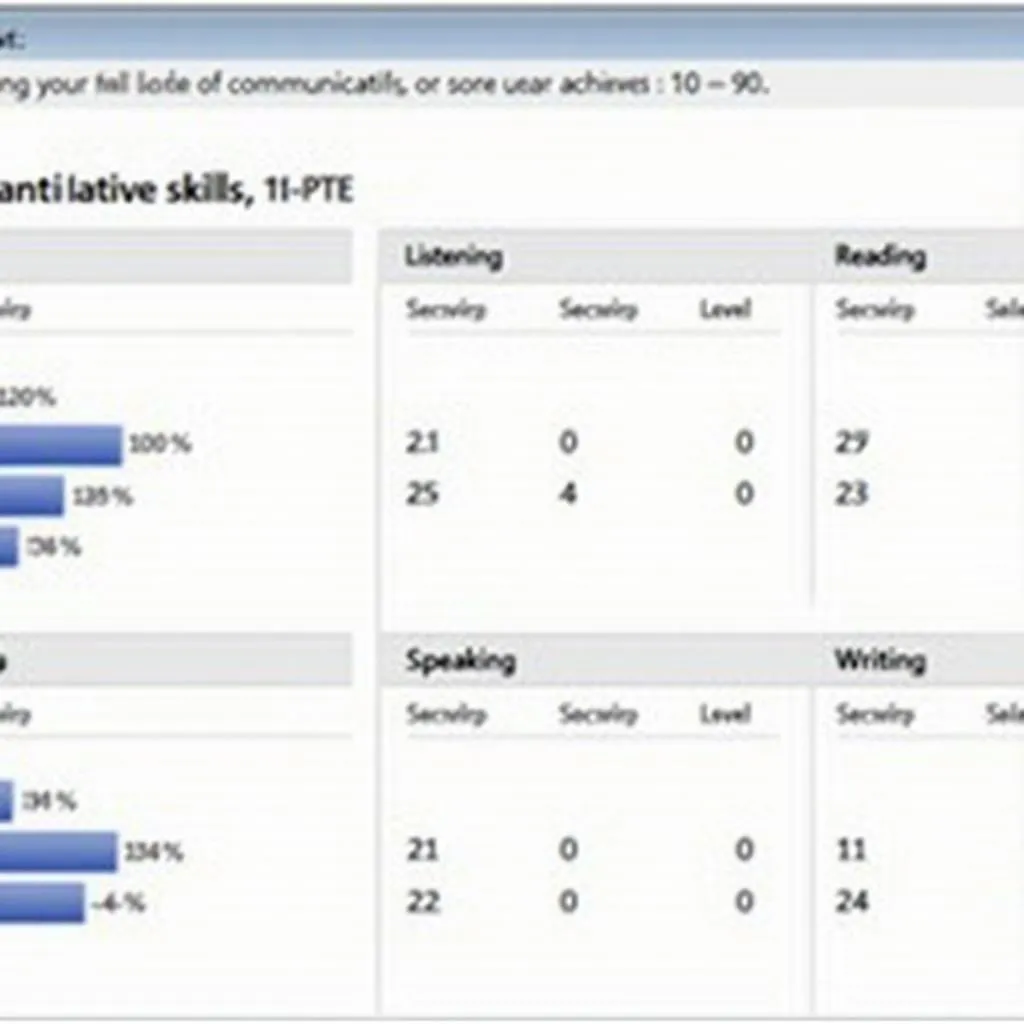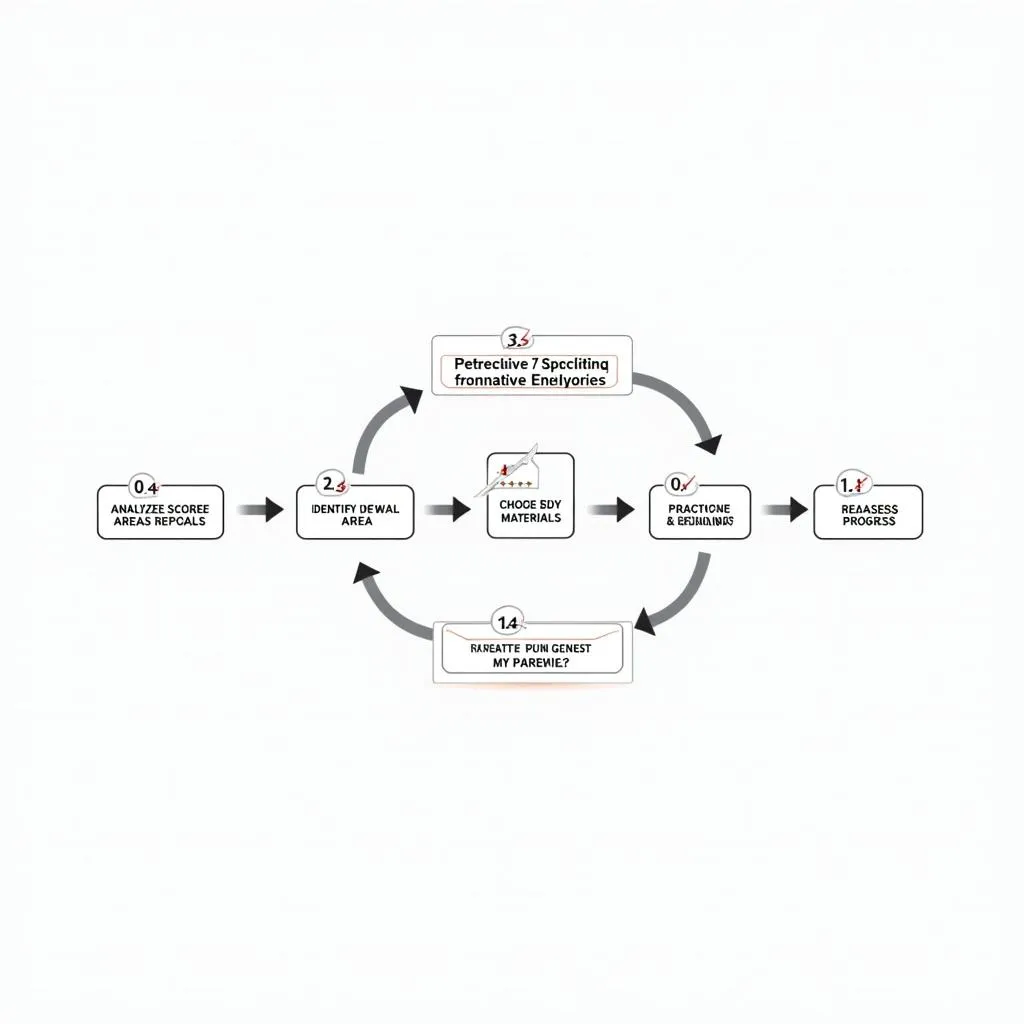Understanding your PTE Academic score report is crucial for assessing your language proficiency and identifying areas for improvement. This comprehensive guide will walk you through the intricacies of interpreting your PTE exam results, helping you make informed decisions about your language learning journey.
Decoding the PTE Score Report
The PTE Academic score report provides a wealth of information about your English language skills. Let’s break down the key components:
Overall Score
Your overall score ranges from 10 to 90 points, reflecting your general English language ability. This score is calculated based on your performance across all test items and is often the primary focus for many test-takers.
Communicative Skills Scores
PTE Academic evaluates four communicative skills:
- Listening
- Reading
- Speaking
- Writing
Each skill receives a score between 10 and 90, giving you a clear picture of your strengths and weaknesses in different language areas.
 PTE Score Report Communicative Skills Breakdown
PTE Score Report Communicative Skills Breakdown
Enabling Skills Scores
To provide a more nuanced understanding of your language proficiency, PTE Academic also assesses six enabling skills:
- Grammar
- Oral Fluency
- Pronunciation
- Spelling
- Vocabulary
- Written Discourse
These scores range from 10 to 90 and offer insights into specific aspects of your language use.
Understanding Score Meanings
Interpreting your PTE scores requires knowledge of what different score ranges represent. Here’s a general guide:
- 90: Expert user
- 76-89: Very good user
- 67-75: Good user
- 58-66: Competent user
- 50-57: Modest user
- 43-49: Limited user
- 30-42: Extremely limited user
- 10-29: Non-user
Remember, these are general guidelines, and specific institutions or organizations may have their own score requirements.
Analyzing Your Performance
To make the most of your score report, follow these steps:
- Compare your overall score to your target score.
- Examine your communicative skills scores to identify strengths and weaknesses.
- Review enabling skills scores for more detailed insights.
- Look for patterns across different skill areas.
Dr. Emma Thompson, a renowned PTE expert, advises: “Don’t just focus on your overall score. The breakdown of communicative and enabling skills provides valuable information for targeted improvement.”
Leveraging Your Scores for Improvement
Once you’ve analyzed your scores, it’s time to create an action plan:
- Prioritize weaker areas for focused practice.
- Set realistic goals for each skill.
- Use PTE-specific study materials and practice tests.
- Consider seeking guidance from a PTE tutor or language coach.
 PTE Score Improvement Strategy Flowchart
PTE Score Improvement Strategy Flowchart
Common Questions About PTE Scores
How long are PTE scores valid?
PTE Academic scores are typically valid for two years from the date of the test. However, some institutions may have different policies, so it’s best to check with your specific organization.
Can I combine scores from different test attempts?
No, PTE Academic does not allow score combining. Each test attempt is considered separately, and you must achieve all required scores in a single sitting.
How do PTE scores compare to other English language tests?
PTE Academic scores can be roughly compared to other tests like IELTS and TOEFL. For example, a PTE score of 65 is often considered equivalent to an IELTS score of 6.5. However, it’s essential to check with your target institution for their specific score requirements and conversions.
How can I improve my PTE scores?
Improving your PTE scores requires targeted practice and a good understanding of the test format. Focus on your weaker areas, use official PTE practice materials, and consider how to practice summarizing for PTE to enhance your skills across multiple question types.
What if I’m not satisfied with my scores?
If you’re not happy with your PTE scores, you can retake the test. There’s no mandatory waiting period between attempts, but it’s advisable to allow time for additional preparation and skill improvement before retesting.
Conclusion
Interpreting your PTE exam score is a crucial step in your language learning journey. By understanding the nuances of your score report and using this PTE Exam Score Interpretation Guide, you can identify areas for improvement and develop a targeted study plan. Remember, your scores are a snapshot of your current abilities, and with dedicated practice, you can enhance your English language skills and achieve your desired results.
For more detailed insights on understanding your results, check out our guide on how to interpret PTE score reports. With persistence and the right approach, you’ll be well on your way to unlocking your true potential in English language proficiency.